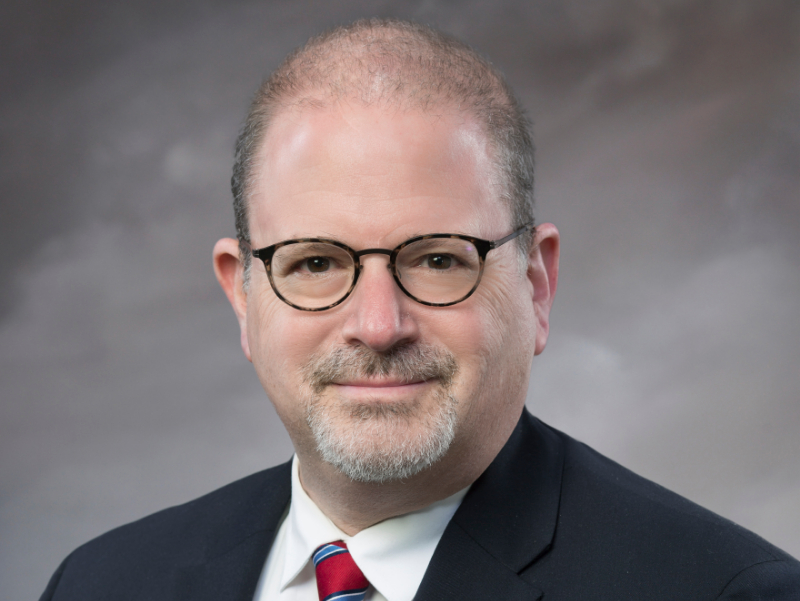Ten years ago, Rabbi Mark Glickman, the spiritual leader of Reform congregation Temple B’nai Tikvah in Calgary, may well have been the first rabbi in more than 100 years to set foot in the famed Cairo Genizah. Prior to that, the last known rabbi to visit the genizah was Rabbi Solomon Schechter, the man who, in 1896, brought the repository of hundreds of years’ worth of Jewish books and documents stored in a synagogue in Cairo to world attention.
Glickman was in Cairo to do research for his book Sacred Treasure – the Cairo Genizah: The Amazing Discoveries of Forgotten History in an Egyptian Synagogue Attic. He followed that up in 2016 with the release of Stolen Words: The Nazi Plunder of Jewish Books.
Glickman was ordained in 1990. His first position was as a youth director in New York for the Union of American Hebrew Congregations (now the Union for Reform Judaism). He has held pulpits at Temple Israel in Dayton, Ohio, Temple Beth-El in Tacoma, Wash., and other synagogues in the Seattle area. Prior to coming to Calgary, he had filled interim positions in Boulder, Colo., and Baton Rouge, La.
Glickman is scheduled to give a multimedia presentation about the discovery of the genizah, including some video of his visit there, at Limmud in Winnipeg on March 1.
Tell our readers about Temple B’nai Tikvah.
B’nai Tikvah celebrated its 40th anniversary last year. We have a membership of 321 families. At a time when synagogues across North America are struggling, our congregation is actually growing.
What surprised me about Canada, as compared to the United States, is the denominational landscape. In America, the Reform movement is the largest denomination, as compared to Conservatism in Canada.
How did your first book come about?
The Cairo Genizah is a fascinating story. There have been hundreds of thousands of books and articles written about the genizah, but the vast majority of them are for a scholarly audience. I saw the potential for a comprehensive history of the genizah for a wider audience. I delved into why the documents are important, how they were discovered and what happened to them.
There is a real spirit of adventure and discovery woven into this story and my book. I had to learn about medieval Jewry, some history of the written word and physical objects. I hope that I was able to bring an accessible and engaging style to the story.
How long were you in Cairo and what was the experience like?
My son and I were just in Cairo for a few days and the visit to the genizah was the highlight of the time we were there. It was a real thrill to be there. It was exciting to see the room in which so much Jewish knowledge was stored. There were prayer books, copies of books of the Torah, medical prescriptions, poetry and many other documents. I imagined pages over the centuries fluttering down to the floor. We were among just a few outside visitors that had been there in 99 years.
Where else did you go to research your book?
I did further research in Cambridge, where Solomon Schechter was a member of the faculty and where the majority of the genizah documents are stored. I also went to the Jewish Theological Seminary in New York, which has the second largest collection of genizah material.
What was the response to the book?
It sold several thousand copies. It is available in both hardcover and softcover editions, as an audiobook and also as an ebook.
How soon after your first book was published did you start to work on your second book?
I actually began doing research on my second book in 2010, before my first book was released.
What attracted you to the story of the Nazi plunder of Jewish books?
That is an interesting story in itself. I am a book nerd. I had ordered a book on eBay, an 18th-century German volume on Jewish religious law. Inside the book was this bookplate: “Jewish Cultural Reconstruction, Inc.” Since I was unfamiliar with the organization, I looked into it.
This was an organization dedicated to the restitution and distribution of Jewish cultural property that was stolen by the Nazis. I discovered that the Nazis looted hundreds of millions of Jewish-owned books. For some reason, they seemed particularly interested in trashy novels and children’s books.
How long did you spend researching your second book?
Three or four years. I spent some time at the YIVO Institute for Jewish Research in New York, where a lot of the rescued material was transferred after the war.
A lot of people who read the book have told me that they found it informative and important.
As a rabbi, how did you find the time to research your books?
With great difficulty. At the time that I was researching and writing the books, I wasn’t engaged full-time as a rabbi. I set aside an hour first thing every morning for studying and research.
Do you have a new book in the works?
Perhaps. I am starting research on what might become a book. The working title is Keys to the Sun and the Moon: Unlocking the Secrets to the Jewish Calendar. This is a perplexing subject that involves mathematics, astronomy and astrology, and much more.
When do you expect to finish this book?
If I’m lucky, it will come out sometime in the next few years.
This interview has been edited and condensed for style and clarity.
